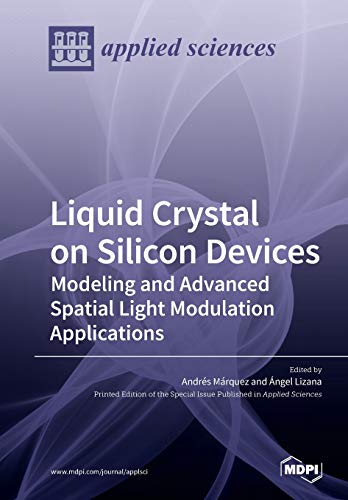(Ebook) Liquid Crystal on Silicon Devices: Modeling and Advanced Spatial Light Modulation Applications by Andrés Márquez (editor), Ángel Lizana (editor) ISBN 9783039218288, 9783039218295, 303921828X, 3039218298
Liquid Crystal on Silicon (LCoS) has become one of the most widespread technologies for spatial light modulation in optics and photonics applications. These reflective microdisplays are composed of a high-performance silicon complementary metal oxide semiconductor (CMOS) backplane, which controls the light-modulating properties of the liquid crystal layer. State-of-the-art LCoS microdisplays may exhibit a very small pixel pitch (below 4 μm), a very large number of pixels (resolutions larger than 4K), and high fill factors (larger than 90%). They modulate illumination sources covering the UV, visible, and far IR. LCoS are used not only as displays but also as polarization, amplitude, and phase-only spatial light modulators, where they achieve full phase modulation. Due to their excellent modulating properties and high degree of flexibility, they are found in all sorts of spatial light modulation applications, such as in LCOS-based display systems for augmented and virtual reality, true holographic displays, digital holography, diffractive optical elements, superresolution optical systems, beam-steering devices, holographic optical traps, and quantum optical computing. In order to fulfil the requirements in this extensive range of applications, specific models and characterization techniques are proposed. These devices may exhibit a number of degradation effects such as interpixel cross-talk and fringing field, and time flicker, which may also depend on the analog or digital backplane of the corresponding LCoS device. The use of appropriate characterization and compensation techniques is then necessary.
*Free conversion of into popular formats such as PDF, DOCX, DOC, AZW, EPUB, and MOBI after payment.


